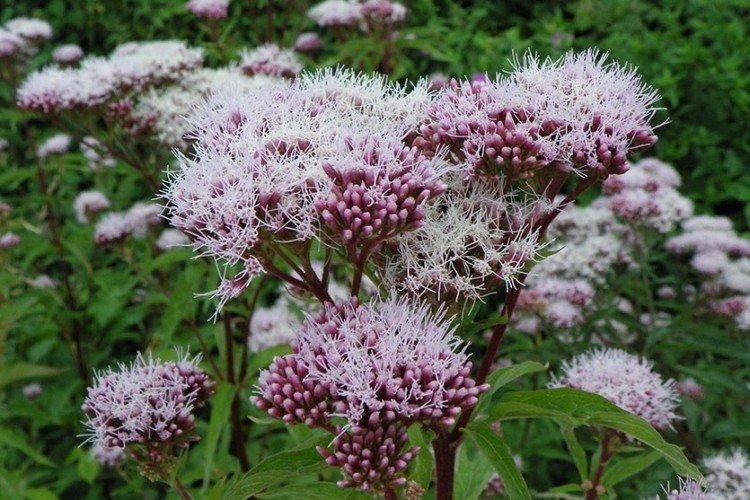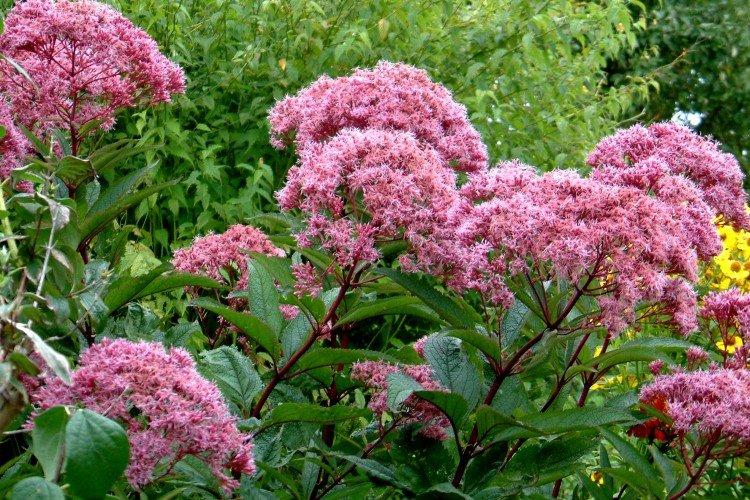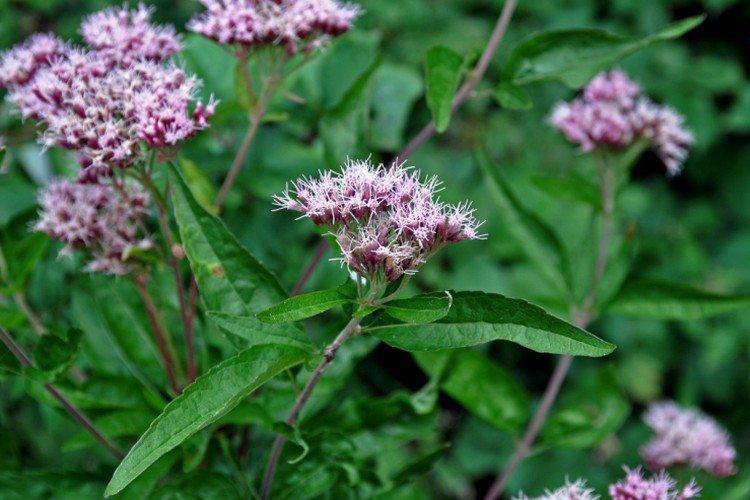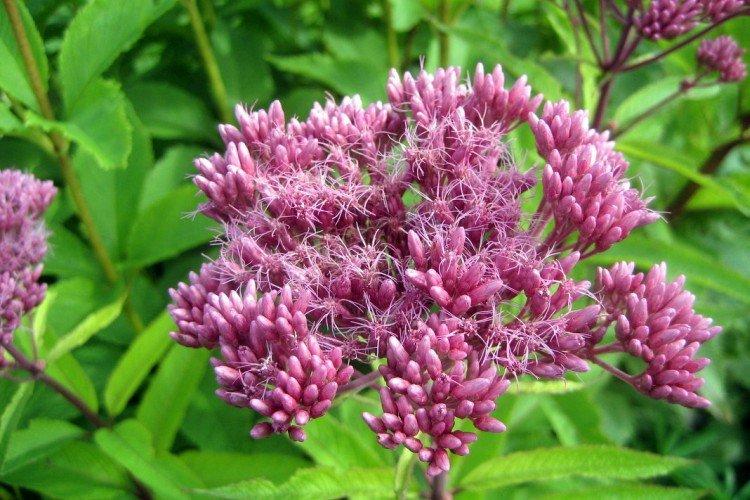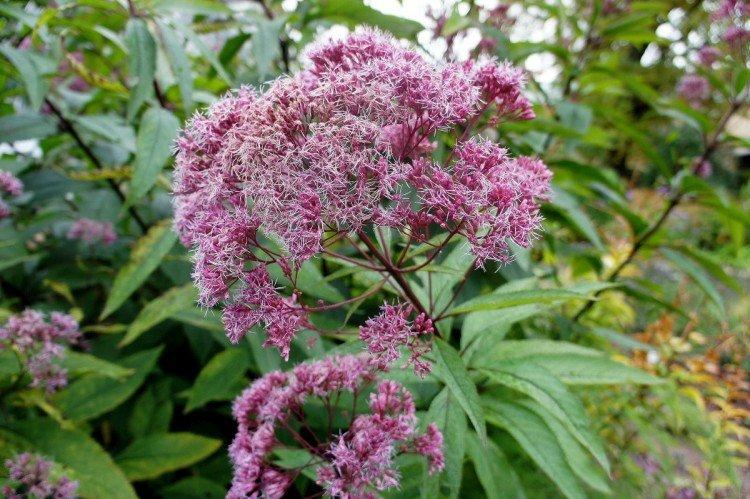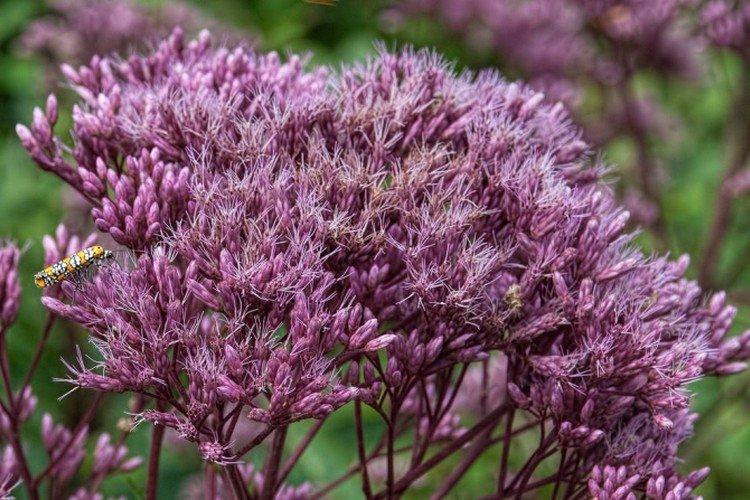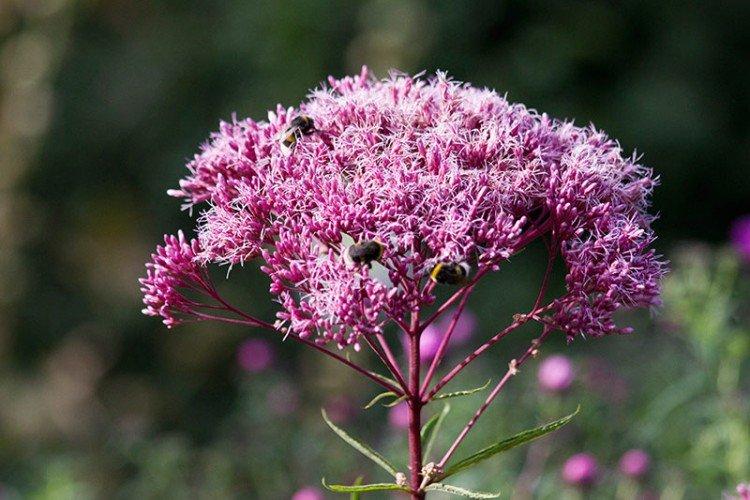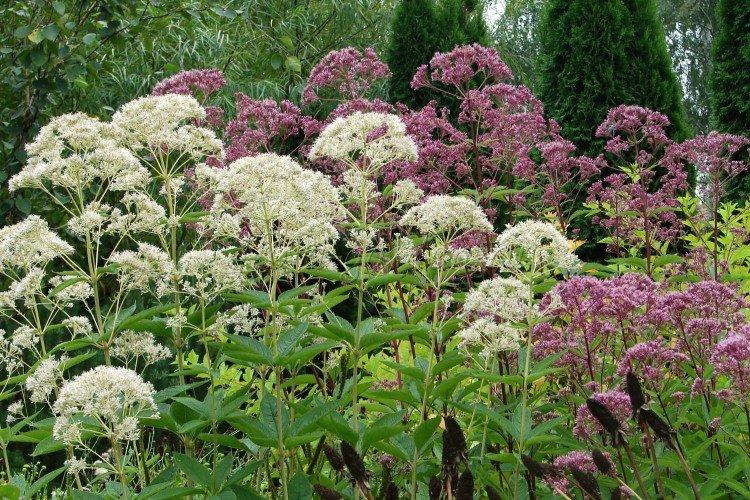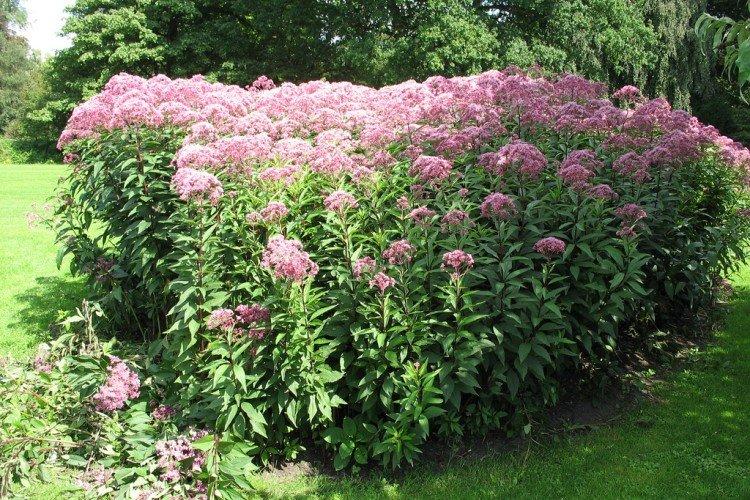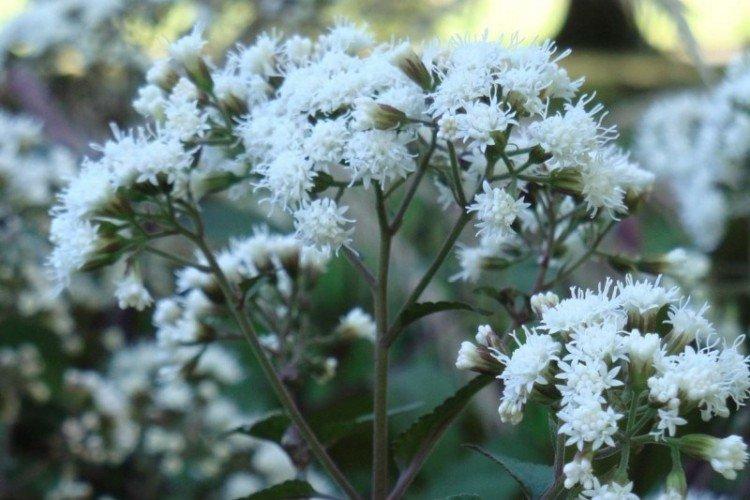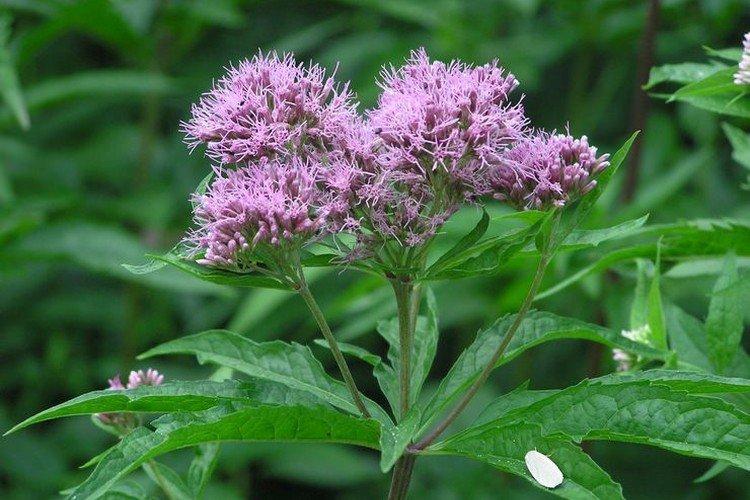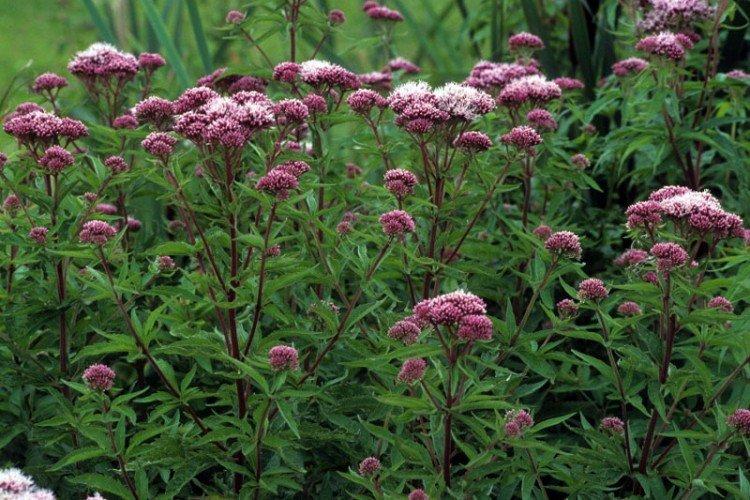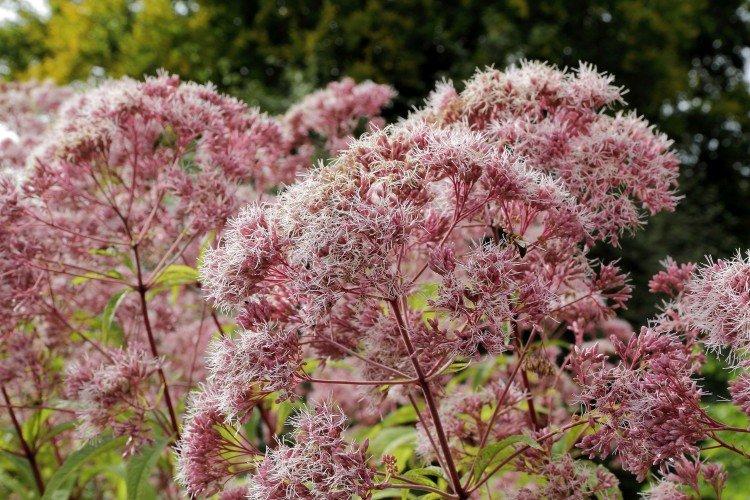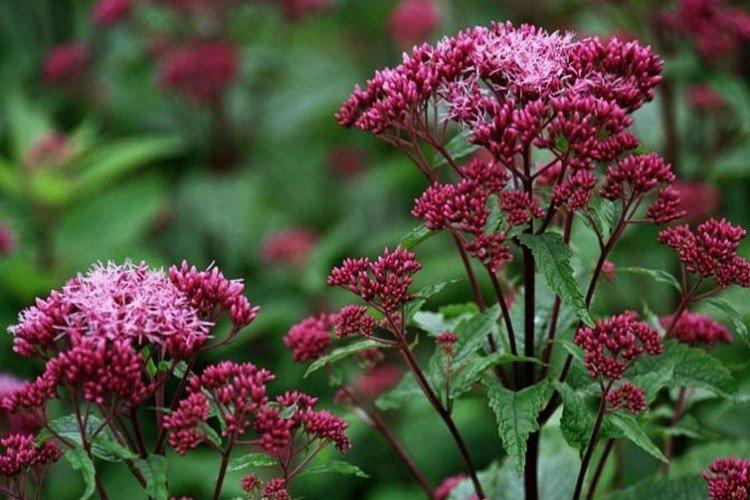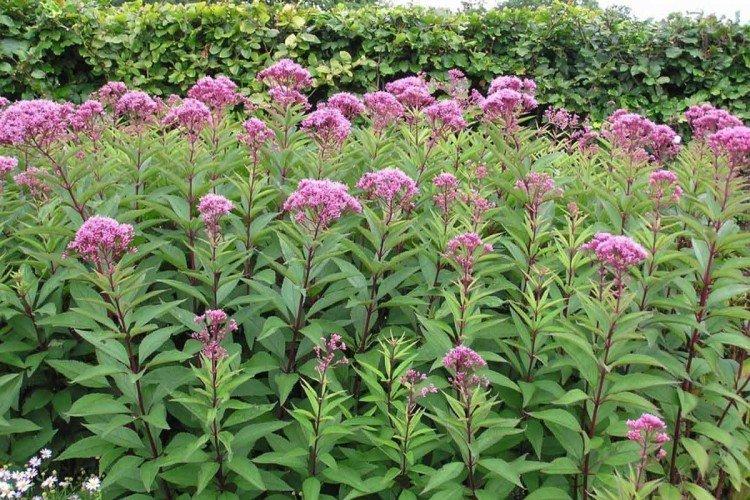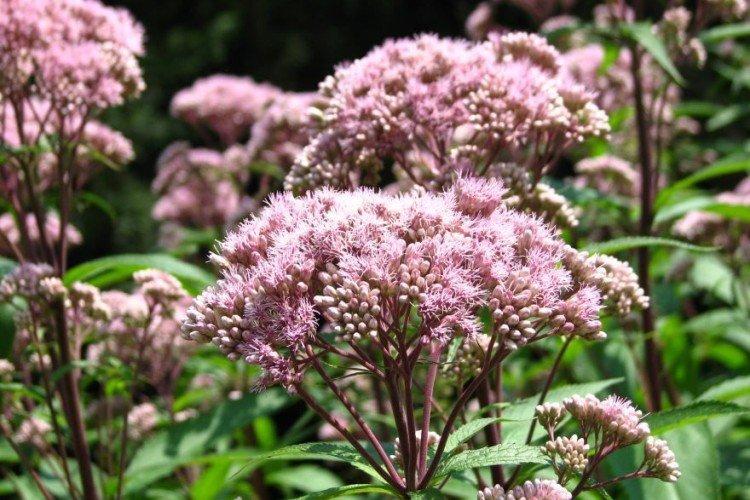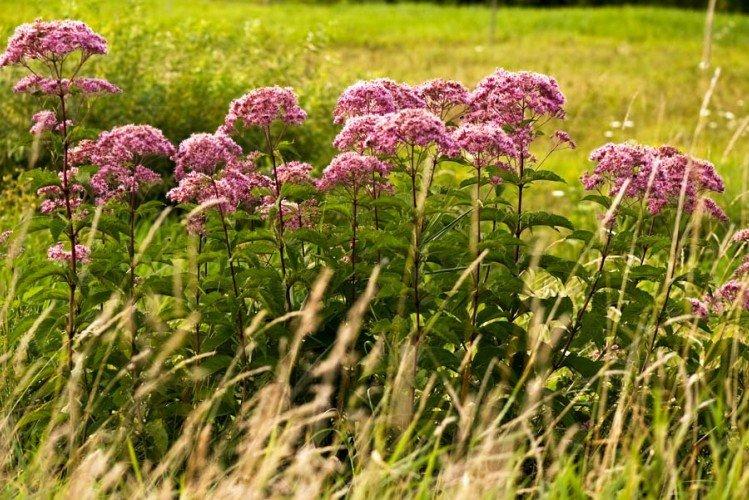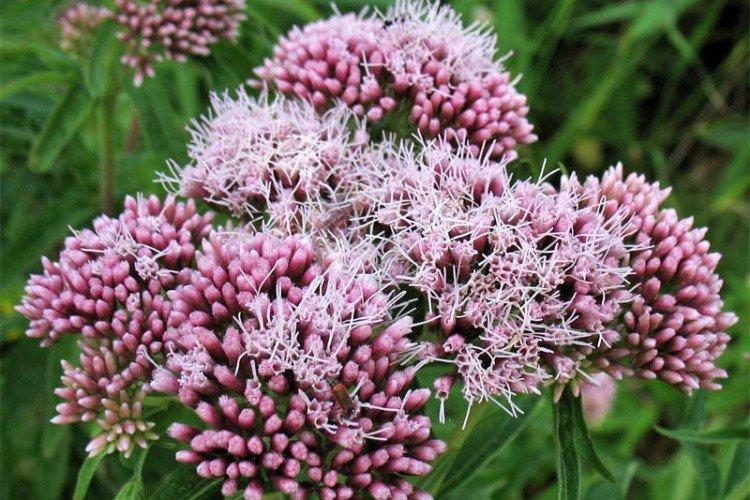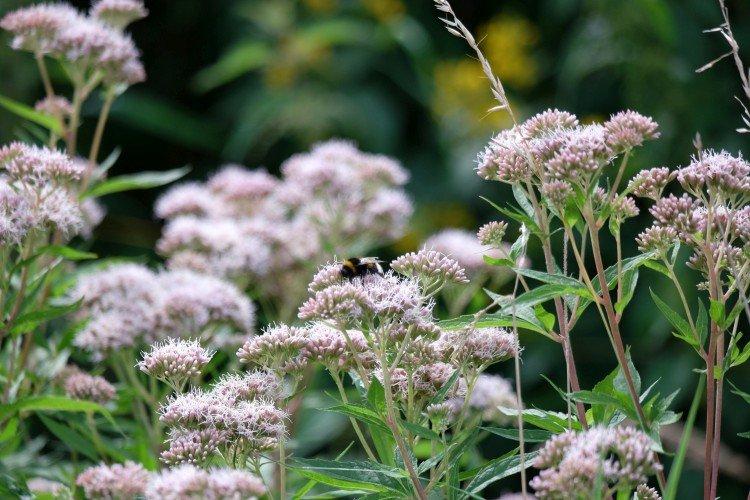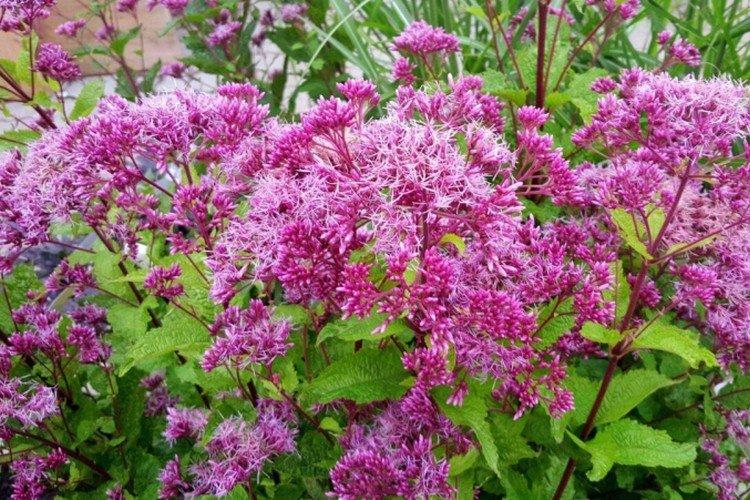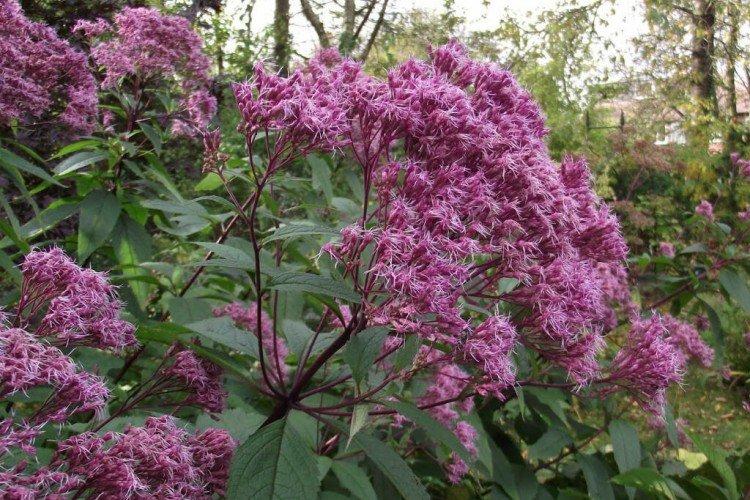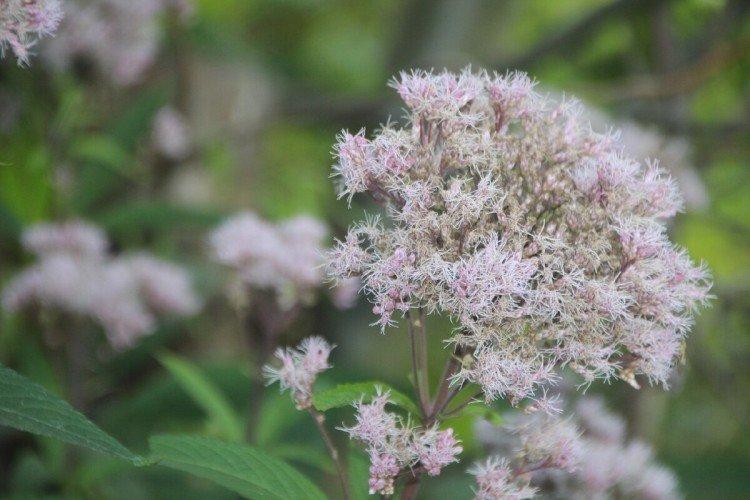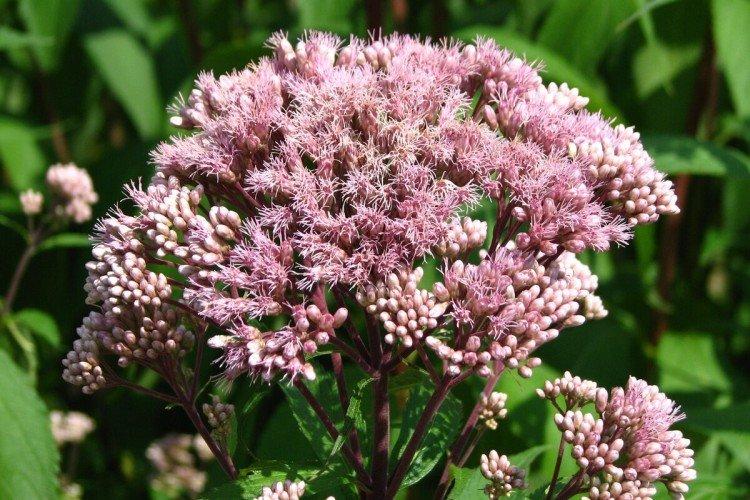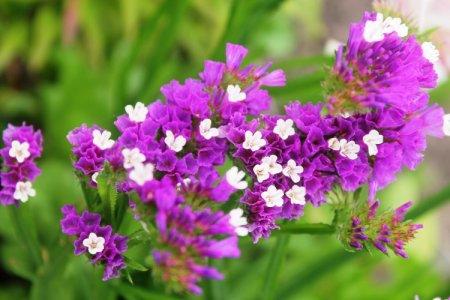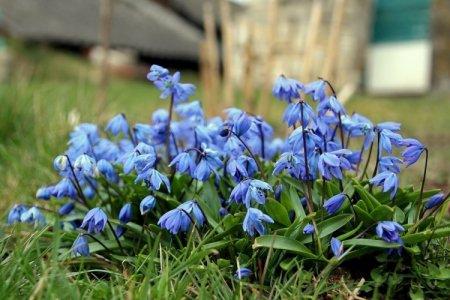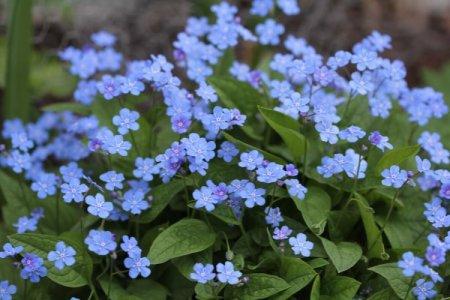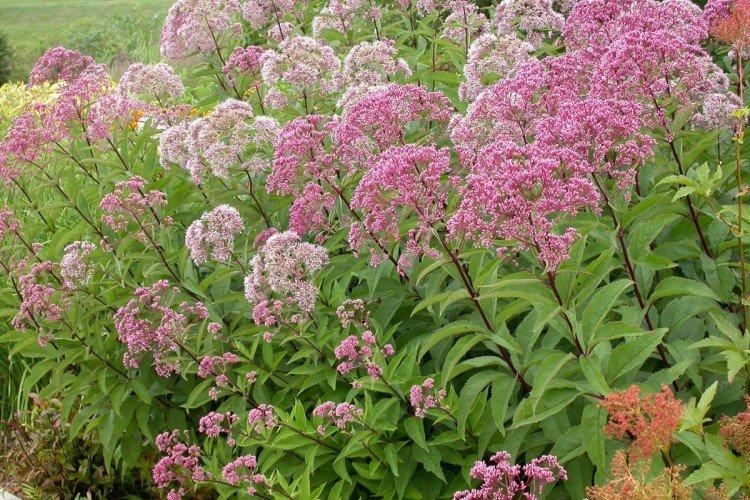
The tall and spreading thickets of the steep are what you need if you like to decorate the site with spectacular and unusual greenery. This is not the most popular plant among domestic gardeners - and in vain. We will tell you what is so good about the steeple!
general information
The ornamental flowering birchwood belongs to the Asteraceae, so it retains their characteristic features. It is a perennial shrub with a strong and well-developed root system. The height of the stems sometimes reaches 2 m, but there are also miniature varieties of 25-35 cm.
The stems are covered with elongated pinnate or lobed leaves. The varieties with burgundy and purple veins look interesting. The steak got its name for a certain similarity with certain types of hemp - the slope. And the name "Evpatorium" is associated with a legend about Tsar Evpator, who used this plant as an antidote.
Stem rose blooms in late summer, so it is the perfect fall flower. Its dense panicle inflorescences grow up to 25 cm in diameter. Small flowers are colored white, pink or purple. In addition, the stethoscope is notable for its expressive aroma.
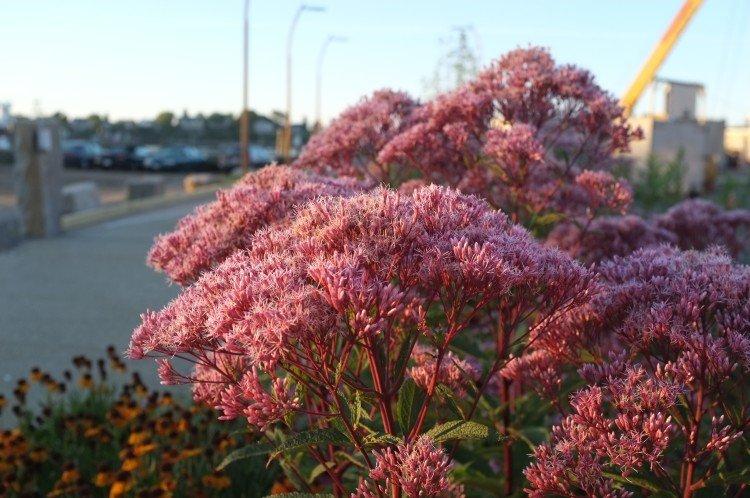
Types of stethoscope
There are more than a hundred species of the steak, and just as many varieties, with the status of which botanists around the world have not yet decided. Let's go through the main ones!
Hemp steep
The most common European species with straight stems up to 50 cm. Finger leaves are slightly pubescent, and the flowers are collected in fluffy corymbose panicles. A characteristic crest appears on the fruit as it ripens.
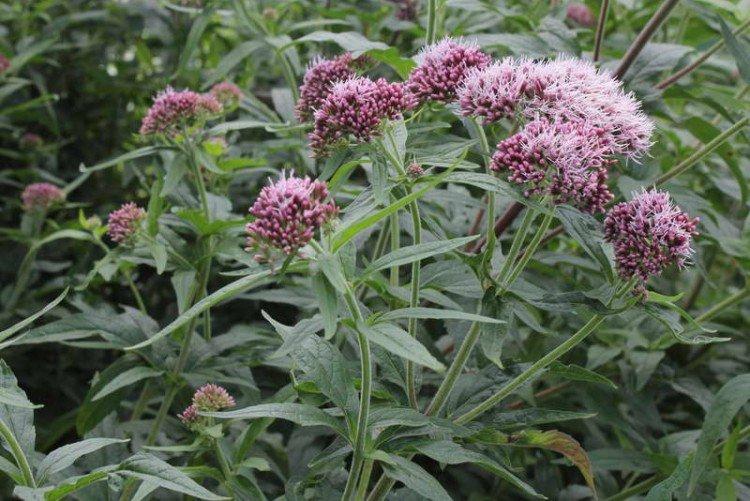
Purple steeple
A tall perennial up to 1.5 m high with an interesting bluish tint of the entire green part. It blooms a little earlier than other species - in July. Inflorescences come in all shades of pink, crimson and purple.
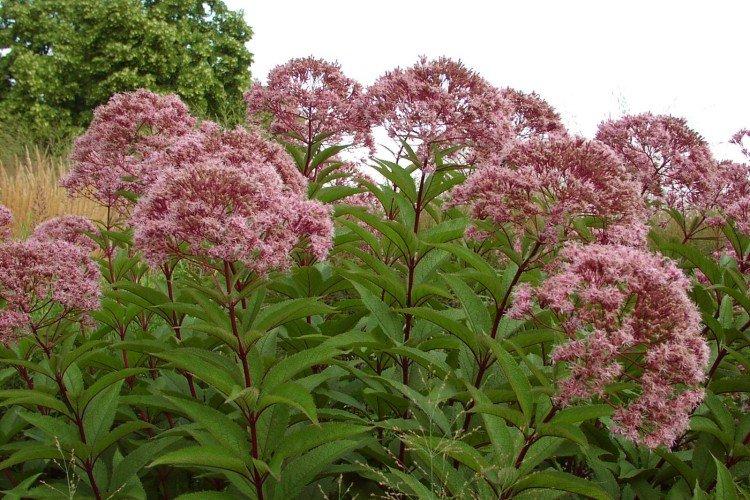
Tubular steep sill
A real giant even by the standards of the steep-sill - up to 3 m in height. Varieties with snow-white flowers are especially appreciated, and the most popular among them is the Album variety.
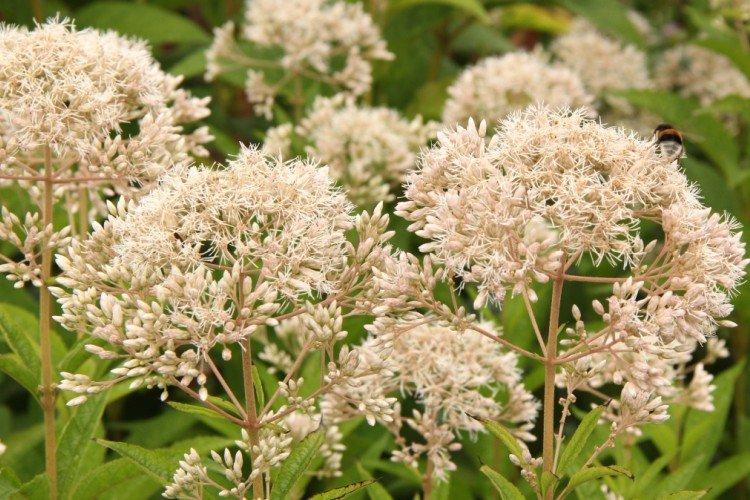
Wrinkled steeple
It is a variety with white buds and common oval leaves with a scalloped edge. There are interesting decorative varieties with brown, bronze and purple foliage.
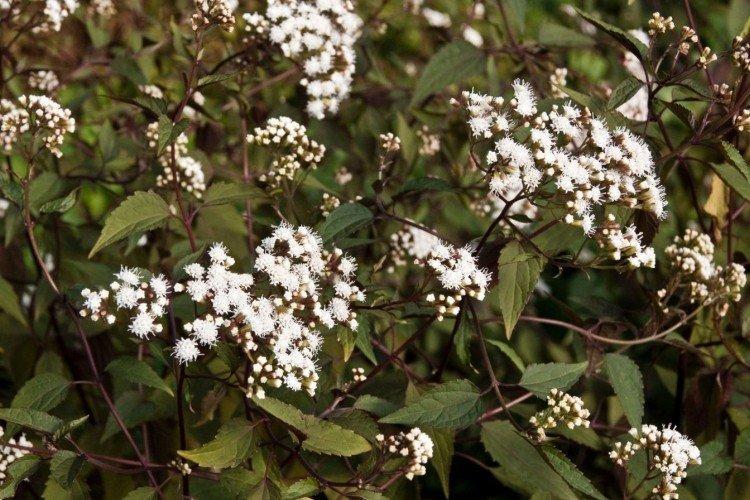
Spotted Bone Stem
A more exotic species in our latitudes with high shoots up to 1.8 m. Breeders have bred many decorative varieties, for example, with red stems or white-gray flowers.
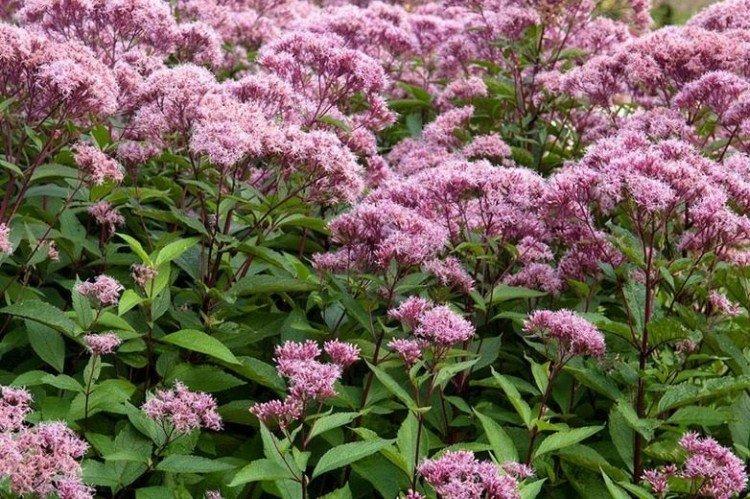
Pierced-leaved steeple
It is more of a medicinal than an ornamental variety. It was once used to treat fever, and it is still in demand in folk and official medicine. In season, the shoots are covered with small white buds.
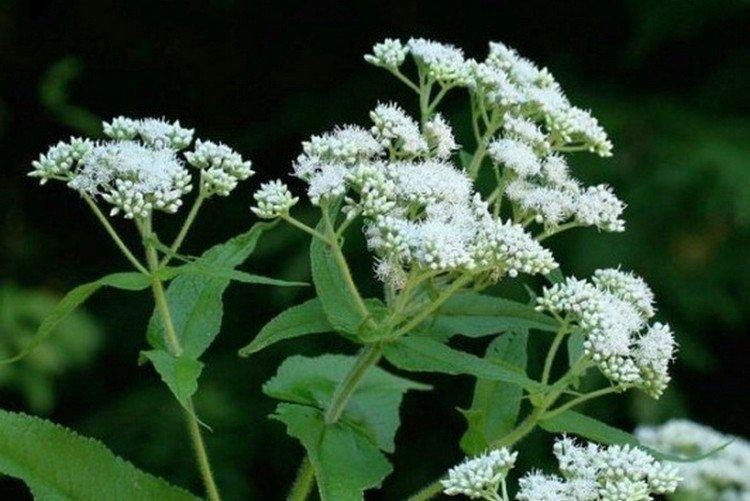
Skeleton care
In nature, steppes are usually found in warm and humid forests, so consider this feature when planning your care. Follow these simple recommendations, and he will delight you with flowering until the very frost!
Temperature and lighting
The bed frame needs regular and stable lighting, so choose an open area. Avoid drafts and strong gusts of wind that can damage tall stems. Some species can grow in light shade.
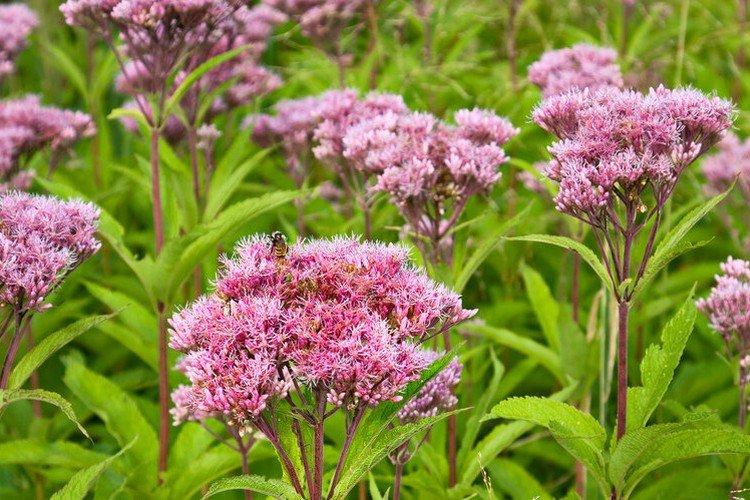
Watering
Bone sap loves moisture and grows well near water bodies. A prerequisite is frequent and abundant watering, and the plant is not afraid of even a slight stagnation of moisture. After water procedures, periodically loosen the surface.

The soil
Bonewood prefers neutral, fertile soil, but even it needs to be dug up with compost before planting. Worst of all, the plant takes root on sandstones and loams.
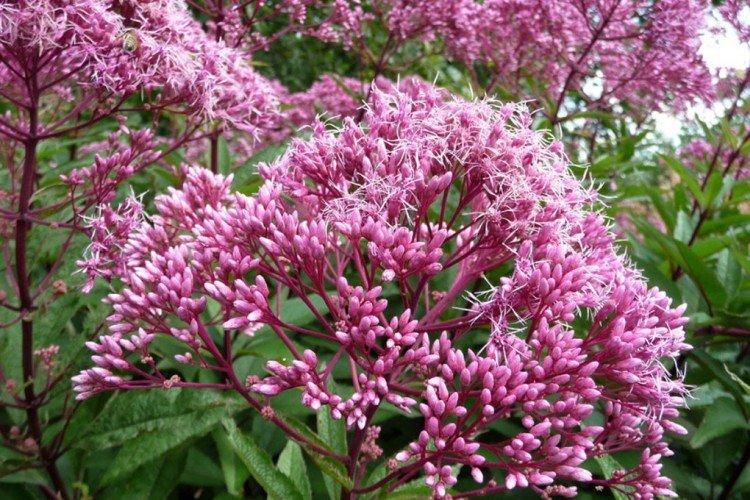
Fertilizers and feeding
In one season, the birchwood is fed at least three times: in early spring, in the middle of summer and during the formation of buds. A weak organic solution and ready-made mineral mixtures are suitable.Fertilizers can be applied more often as needed.
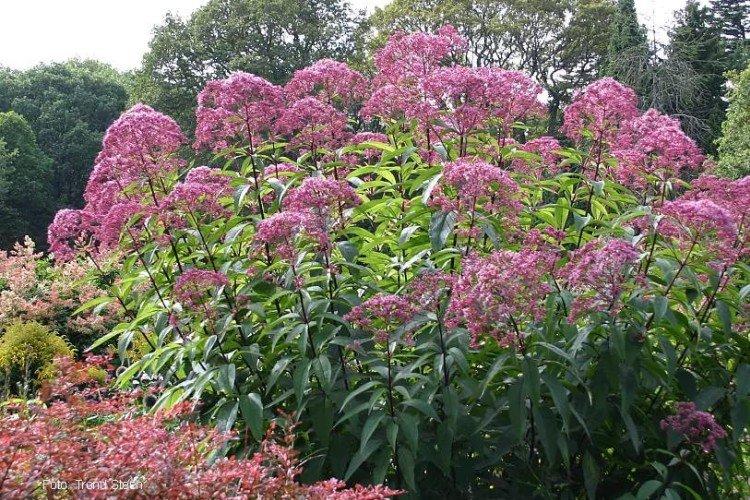
Pruning and garter
It is not necessary to specially cut the sap, so it is enough to remove the wilted inflorescences. Do it as soon as possible, otherwise the flower will successfully self-seed in the most unexpected places. Tall varieties need support, but you can just plant them along the wall - that's enough.
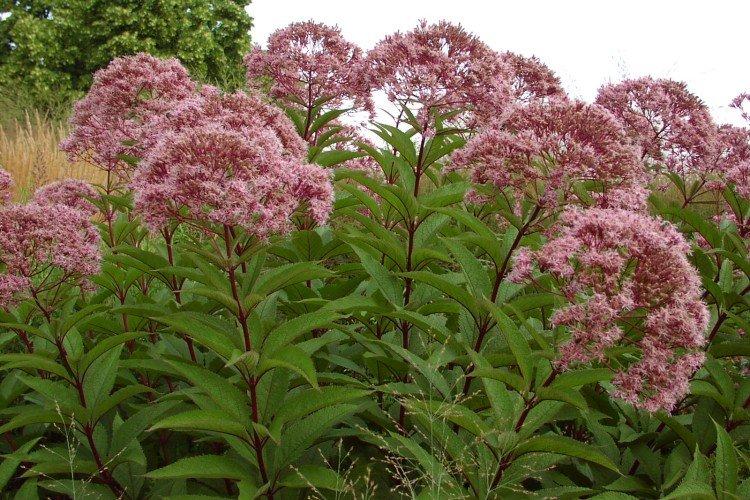
Wintering
Towards the end of autumn, cut off the entire ground part of the bone marrow. The root system is frost-resistant, so it can easily overwinter right in the ground, even without shelter.
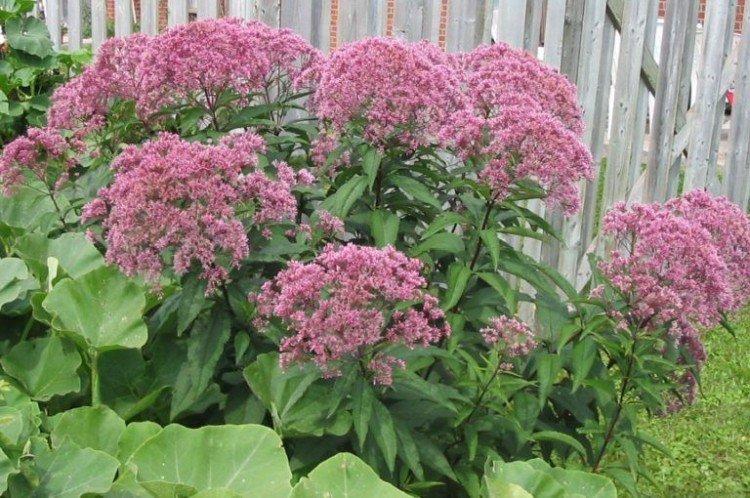
Planting and breeding
The steep is planted with seeds through seedlings. First, they need to be mixed with wet sand and left in a glass jar in the refrigerator for a month. In early March, soak them for a day in potassium permanganate, and then drop them into a container with earth, deepening a maximum of 5 mm.
Leave the seedlings warm under the plastic and air them every day. After 2-3 weeks, the first shoots will appear, and it will be possible to get rid of the makeshift greenhouse. With the formation of 2-3 leaves, seedlings can be dived into peat pots.
In May, gradually harden the seedlings outdoors, and by the end of the month, plant them in a permanent place. The distance between the bushes is up to 80 cm, because they grow strongly. Transplant seedlings directly in peat pots so as not to disturb the rhizome.
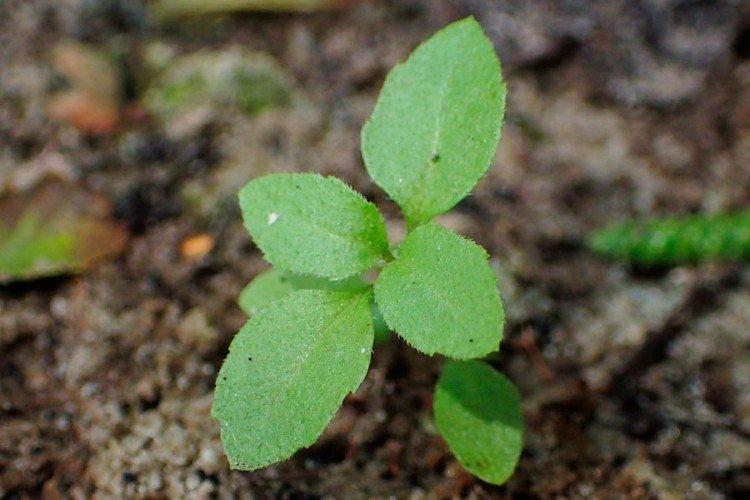
Pest and disease control
Skeleton has an amazing immunity - and this is another reason to pay attention to it. He is not even afraid of fungal diseases due to waterlogging, from which most garden plants suffer.
But there is another danger - miners. These are garden beetles, which are difficult to get rid of not only by folk, but also by chemical methods. Before processing, we advise you to mercilessly cut off all affected ground parts. If it is possible to destroy the pest, the bush will recover safely.
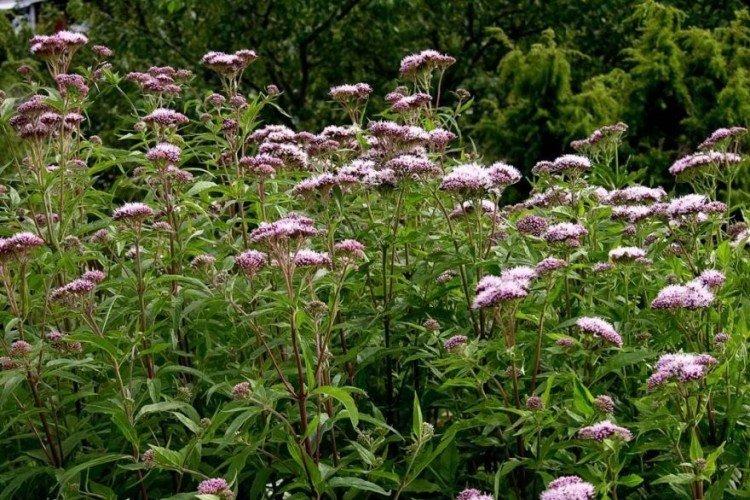
Skeleton - photo
The fluffy inflorescences of a large and powerful stethoscope quickly attract attention even in a blooming garden. Moreover, this is one of the most successful options for the fall!
